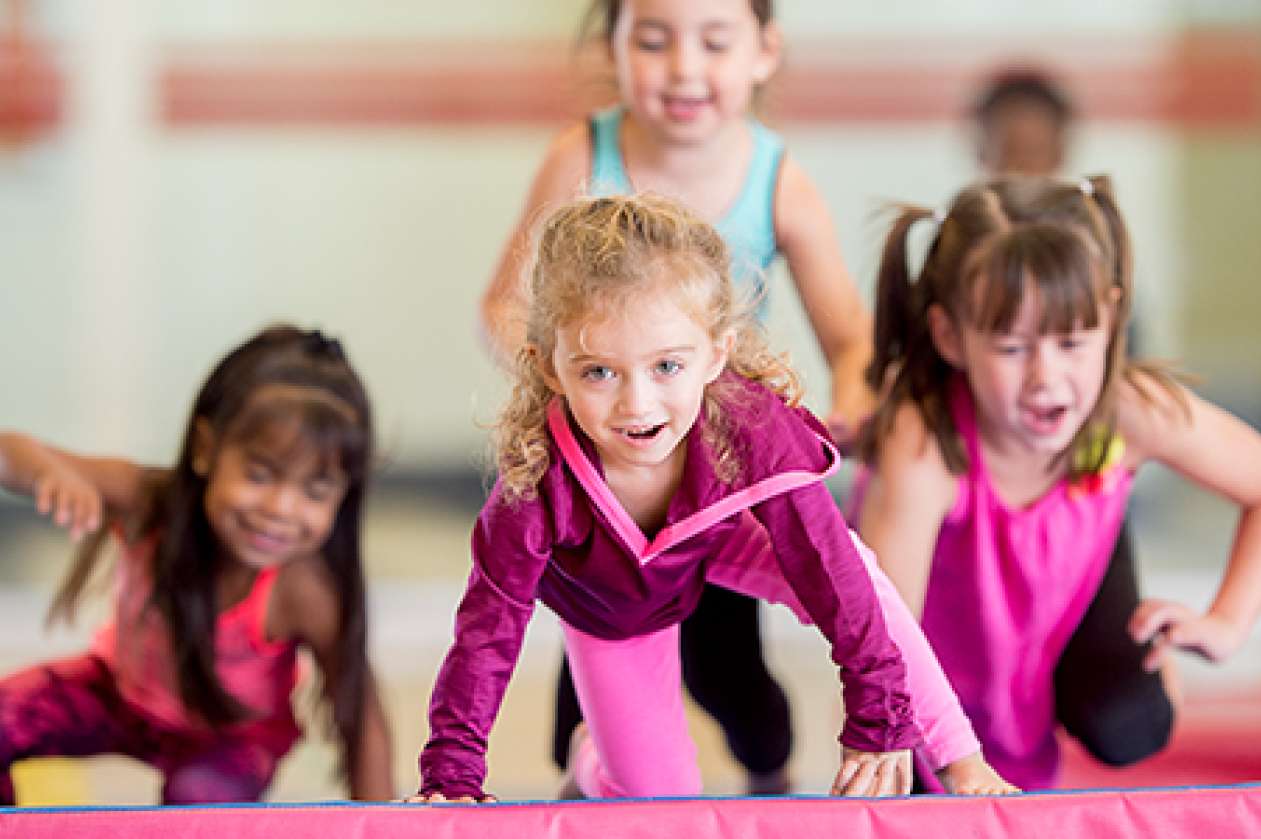
Program innovation: Physical literacy for early childhood
In an ideal world, physical literacy starts early. During early childhood, kids should be moving and developing the basic movement skills that will give them the foundation for becoming physically literate. However, the reality is that most Canadian kids aren’t moving enough.
In Calgary, a team of researchers at Mount Royal University (MRU) is working to change this trend. Through the Preschool Physical Literacy Research program, MRU is developing tools and strategies to help early childhood centres in Alberta to deliver age-appropriate physical literacy programming to toddlers and preschoolers.
“The purpose of our program is to build capacity to enhance preschool physical literacy for children in care,” explains MRU’s Katie Jewitt. “In Alberta, childcare centres adhere to accreditation standards, one of which is a physical literacy component.”
To justify accreditation, centres must identify what they are doing to deliver physical literacy. The research team at MRU helps centres to develop their understanding of physical literacy and then provides guidance on activity programming to develop fundamental movement skills.
MRU begins by delivering a one-day workshop to centre staff. The workshop describes what physical literacy looks like in early childhood, provides an overview of early brain development, offers break-out sessions for staff, identifies keys to a successful program, and then introduces a 12-week play-based program developed by MRU called APPLE Seeds.
“If they didn’t know what physical literacy was beforehand, they definitely know what it is when they leave,” says Jewitt. “They also have strategies and tools to implement the program and the activities.”
In the APPLE Seeds program, each session is divided into three parts: an introductory activity such as a story, a structured physical activity, and then an unstructured play-based activity.
“A typical session might have you going into a classroom and picking up a story about squirrels,” explains Jewitt. “You engage the children about squirrels — how they move, why they move, what they eat — and you spark their curiosity and their thinking. Then you go into the actual structured physical activity where you might have the children emulating how squirrels move, like walking on imaginary branches. They get to explore how their body moves by playfully becoming a squirrel. Finally, you go into an unstructured activity where the children have the opportunity to continue exploring those fundamental movement skills in the environment that you’ve set up for them.”
Through funding provided by the Alberta Sport Connection, MRU is able to offer the entire program to Alberta early childhood centres free of charge. MRU is especially interested in helping vulnerable populations.
“We are working with urban and rural First Nations, Métis, and Inuit, and we are also working with teen moms,” says Jewitt. “We help both private and non-profit centres, and we are also working rurally and regionally. For example, we have two childcare centres in northern Alberta — Lac La Biche and Vermillion — who are in the preliminary stages of the program.”
For the future, MRU would like to see this type of physical literacy programming implemented across Canada.
“We would like to see more provinces adopting this, as well as childcare providers recognizing the need,” says Jewitt. “I think many organizations know how important it is, but it would be good to recognize that there is a program and a framework in place for communities.”






I love love love this!